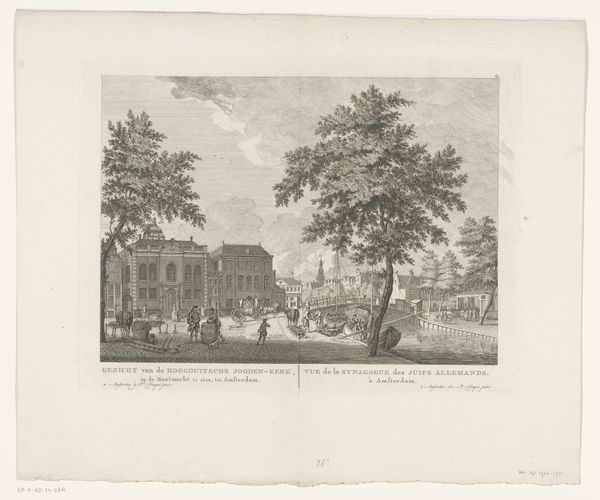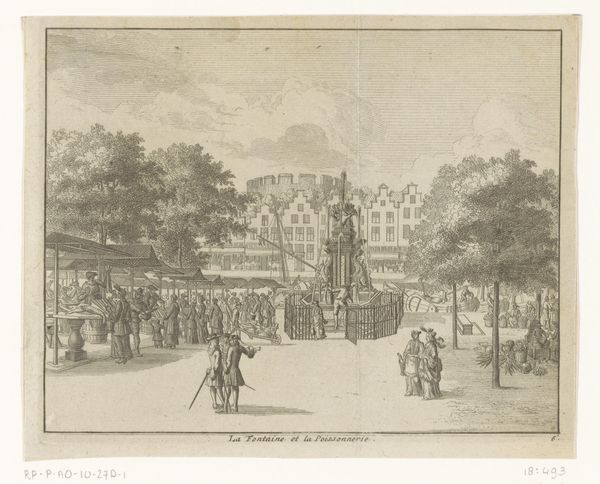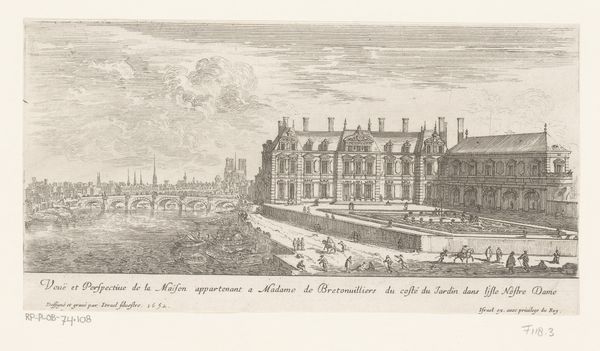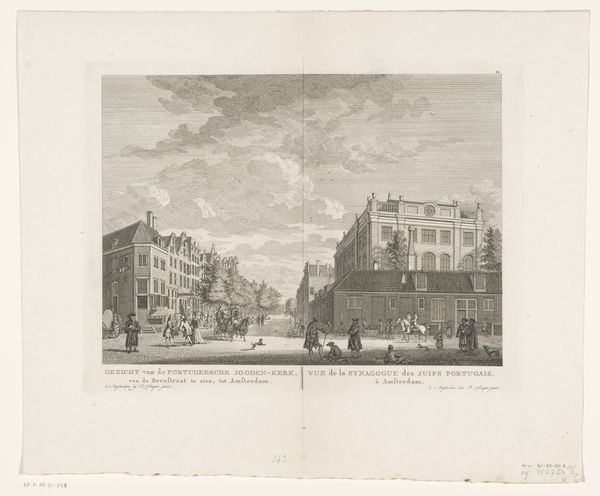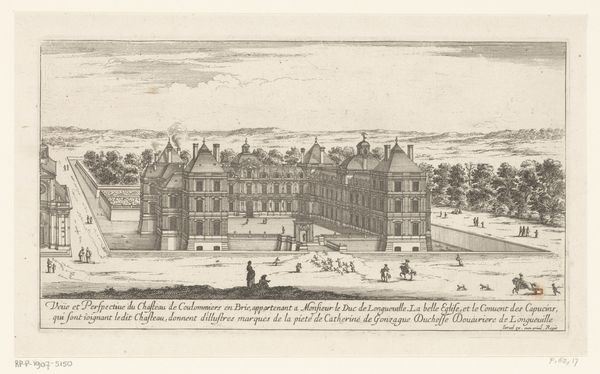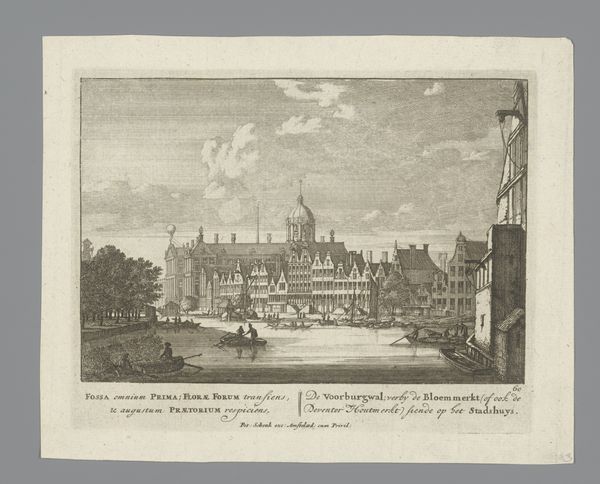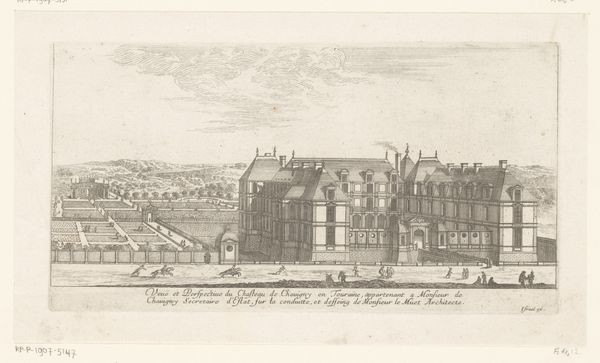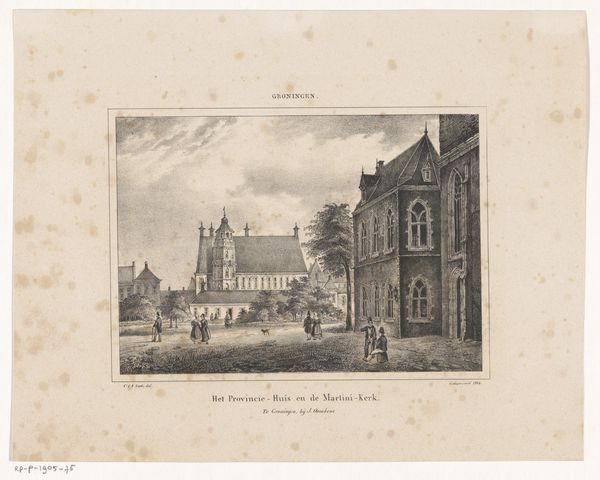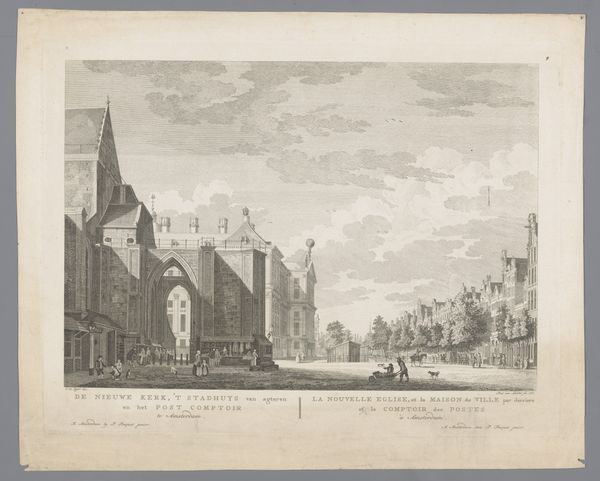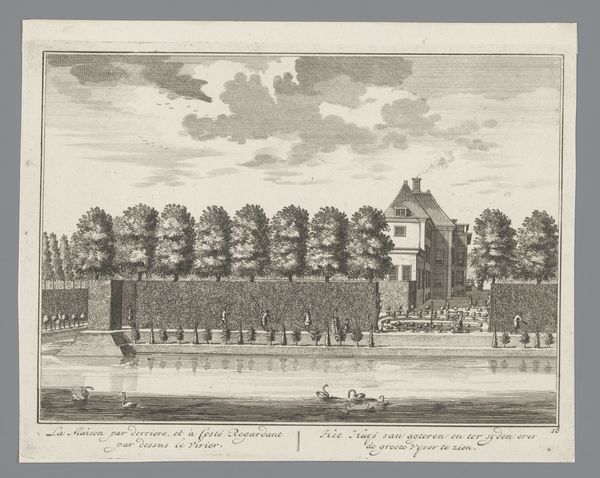
print, etching, engraving
#
baroque
# print
#
etching
#
landscape
#
cityscape
#
engraving
Dimensions: height 308 mm, width 438 mm
Copyright: Rijks Museum: Open Domain
Iven Besoet made this print, Gezicht op de Hofvijver in Den Haag, in 1756 using an engraving technique. This process involves cutting lines into a metal plate, inking the surface, and then wiping it clean, so that ink remains only in the incised lines. The plate is then pressed onto paper. The material qualities of the metal plate - its hardness, its ability to hold fine lines, and the control it offers to the engraver - dictate the precision and detail visible in the print. Look closely, and you’ll see how Besoet has used these qualities to depict the architecture and the reflections in the water, capturing a sense of depth and light. Engraving was a skilled craft, demanding years of training to master the tools and techniques. The level of detail suggests Besoet likely worked within a workshop, possibly as part of a commercial operation, producing prints for sale to a growing middle class with a taste for views of their cities. This print, then, is both a work of art and a product of its time, reflecting the social and economic context of 18th-century Dutch society.
Comments
No comments
Be the first to comment and join the conversation on the ultimate creative platform.
